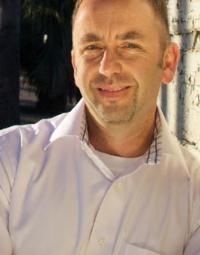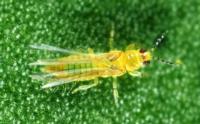Mark Hoddle
Biological control helps Californians tackle pests
Every 60 days, California gains a new and potentially damaging invasive species. he unique climate and geography of California provides diverse ecosytems which are perfect for the establishment of a diverse variety of new pests. The problems caused by invasive species in California are likely to worsen as population growth continues and imports from an ever increasing diversity of countries accelerates.
Mark Hoddle pursues his passion for biological control

Hoddle earned bachelor's and master’s degrees in zoology with a focus on entomology at the University of Auckland. An article he published as a graduate student caught the eye of a University of Massachusetts professor, who invited him to New England to work on silverleaf whitefly.
“I didn’t even know where Massachusetts was, but I was just working as a lab tech in Christchurch so I decided to go,” Hoddle said.
Hoddle earned a Ph.D. in Massachusetts while helping develop a program for growers to control silverleaf whiteflies on greenhouse-grown poinsettias.
Six months before he was to finish his doctorate degree, Hoddle learned of two extension specialist positions open at UC Riverside – one focused on integrated pest management, the other on biological control. He didn’t have plans to stay in the United States, but saw applying for the jobs as an opportunity to visit what he considered the world’s biocontrol capital – the University of California, Riverside. Five months later, he was offered both jobs and selected his first love, biological control.
Tracking an avocado pest
One of the first great challenges of Hoddle's career with UC Agriculture and Natural Resoruces was a mysterious pest damaging fruit and leaves in Southern California avocado orchards.
“They were an unknown species. We wondered where on earth they came from,” he said.

Glassy-winged sharpshooter invades Tahiti
In 2004, Hoddle led a biocontrol initiative in Tahiti, where an invasive pest was threatening the local islanders’ ability to grow their own food. Glassy winged sharpshooter, a half-inch long xylem feeder, was introduced to Tahiti from the United States. It flourished; multiplying in such numbers that droplets of fluid from the pests under infested trees mimicked a steady rain.
“People hated this thing,” Hoddle said. “They were saying, ‘I haven’t had mangos on my trees for three or four years.’”
When Hoddle flew into Tahiti with a potential biological control agent, he was greeted by the local press like a rock star. The research team maintained a parasitic wasp in quarantine for 12 months to rule out the potential for environmental damage, and then the wasp was released around the island. After 5 months, GWSS began to decline; within 7 months, the GWSS almost completely disappeared from the island of Tahiti.
The experience in Tahiti shows the spectacular potential of biological control in combatting introduced species. In a typical year, nine new exotic species become established in California, at an estimated cost in lost agricultural production and control measures of $3 billion per year. Hoddle aims to reduce the threat by coordinating the multidisciplinary Center for Invasive Species Research based at UC Riverside. The Center’s website, developed under his direction, as an exotic pest information clearinghouse for California.


